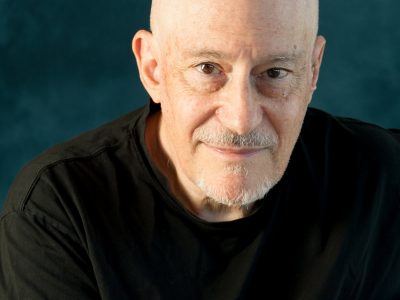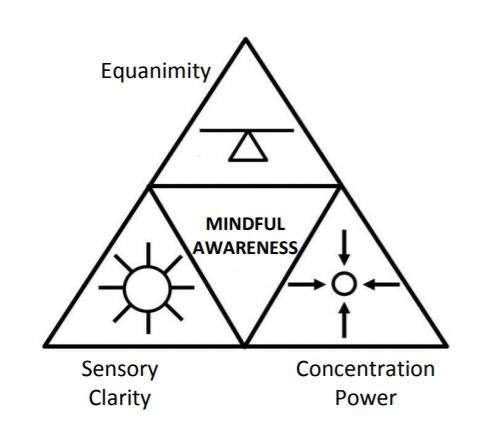Stay in Touch
Stay in the loop about the latest in training, mindfulness, events, and general news.
Unless you’ve been living under a rock for the last decade, you’ve no doubt heard a friend/family member/co-worker/annoyingly chipper person at the gym mention something about mindfulness. Perhaps you have heard one of the celebrity endorsements, as everyone from Oprah Winfrey to Lebron James has gone public with their support of mindfulness meditation. Everyone knows about it, apparently everyone is doing it, or talking about how they should do it, but what exactly is mindfulness?
It turns out there are a lot of different definitions depending on what tradition a style of meditation derives from. I think a lot of people understand mindfulness as a form of paying attention. Eating mindfully, for instance, is often thought of as eating very slowly and deliberately, un-distracted, with attention solely on the task at hand. Jon Kabat-Zinn, whose 8-week Mindfulness Based Stress Reduction (MBSR) program attempts to distill ancient Buddhist teachings into a more mainstream format, defines mindfulness as “paying attention in a particular way: on purpose, in the present moment, and nonjudgementally.” (Kabat-Zinn 1994). This definition has gained a lot of traction in the decades since Kabat-Zinn’s MBSR program launched at the University of Massachusetts Medical School, as his method of mainstreaming Buddhist teachings caught on and has been adopted and reproduced thousands of times around the world.

I’m a Jewish-American Buddhist teacher who got turned on to comparative mysticism by an Irish-Catholic priest and who has developed a Burmese-Japanese fusion practice inspired by the spirit of quantified science.
Shinzen Young
I prefer a definition that comes from American Buddhist teacher Shinzen Young’s Unified Mindfulness system of teaching, understanding and practicing mindfulness: mindfulness is the practice of infusing your experience–and it can be any experience–with the three interconnected attentional skills of concentration, sensory clarity, and equanimity.
Concentration is simply your ability to choose something–anything!–and stay focused on it for some period of time, whether it’s ten seconds or ten minutes. Let’s use an example from endurance training to help understand this. Concentration might be staying focused on the effort of an interval you’re performing, not getting distracted by something you pass on the road, or another person out doing their own workout. You’re focused on just your workout, just this one interval, whatever it is, staying with what is relevant and important, and bringing your attention back to it when you inevitably get briefly distracted.
Sensory clarity is the knowing in finer and finer details the nuanced aspects of whatever it is you are paying attention to. When teaching this I often use the example of a wall, and the different levels of sensory clarity that a wall might offer us. You might first notice, “wall” which, OK, great start, we’re on the right track. Pretty much instantaneously you’ll also notice that the wall has a color, right now the wall next to me is yellow. And it’s a soft yellow, a little muted in tone, not bright like mustard. So already there’s some unpacking of the subtle qualities of this experience. As you gaze at this wall longer, you might start to notice subtle imperfections in the surface of the wall, maybe marks or divots where it has been bumped into over the years, food stains and spots, dirt or dust or streaks or smears. You start to notice that this wall has lived a pretty exciting and rich existence for a wall, because the arising sensory clarity that comes from paying attention really helps you know an experience or object of attention much more intimately.
The final piece of our attentional puzzle is equanimity, which can be thought of as a kind of balance, or a sense of allowing your experience to unfold without impulsive reacting, without habitually clinging to what feels good or resisting what feels uncomfortable. You might notice a feeling of an itch or an ache arise while you’re practicing–instead of habitually reacting to this mild sensation of discomfort, can you notice it, just allowing it to be there, and perhaps watching as it dissolves away on its own? Equanimity means being OK with those sensory experiences that arise that might be unpleasant or uncomfortable, but also might be outside of our control, Shinzen calls it “radical noninterference with the natural flow of our senses” (Young 2018). In endurance training that might look like being OK with the discomfort that inevitably arises during some of our workouts, understanding that it’s a natural part of the training process, and not meeting it with rigid resistance, or starting to tell yourself a story about what it means, or how it’s going to be later. It’s uncomfortable now, you’ve recognized and accepted that, and all you can do is move on with that attitude of allowing.
So there you have it, mindfulness as Concentration, Sensory Clarity, and Equanimity, or CC&E for short. It’s a simple definition that allows for a simple, but rigorous practice of mindfulness in any setting, and at any time. It also yields a simple, powerful technique for practicing and strengthening these skills over time–more on that later.
For now, you can understand mindfulness simply as bringing that quality of awareness–the combination of concentration, sensory clarity and equanimity–to any activity or experience in your life.

Stay in the loop about the latest in training, mindfulness, events, and general news.